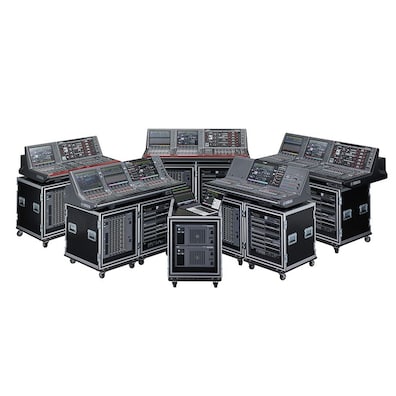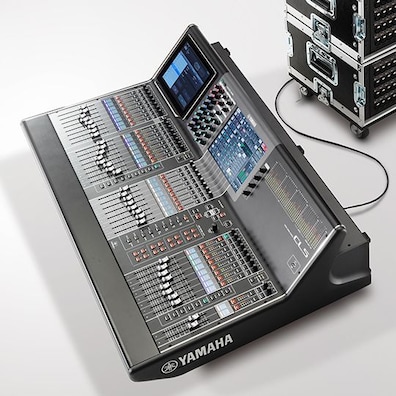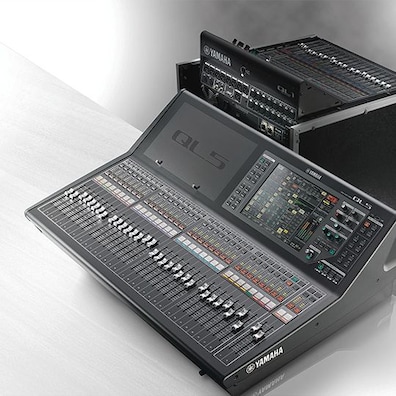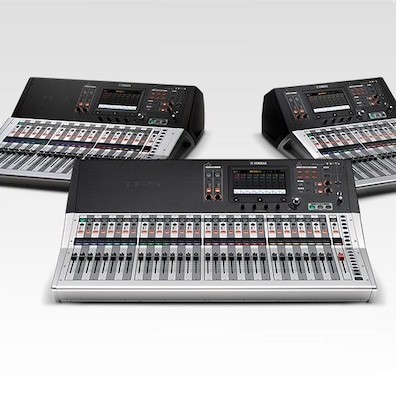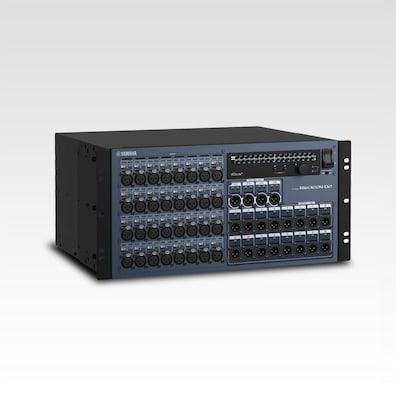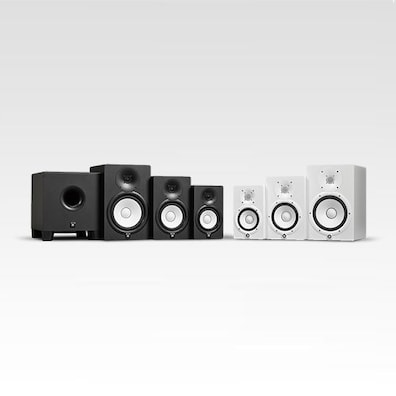Perfect Learning Partners - Yamaha Helps Students Become Tomorrow's Sound Professionals
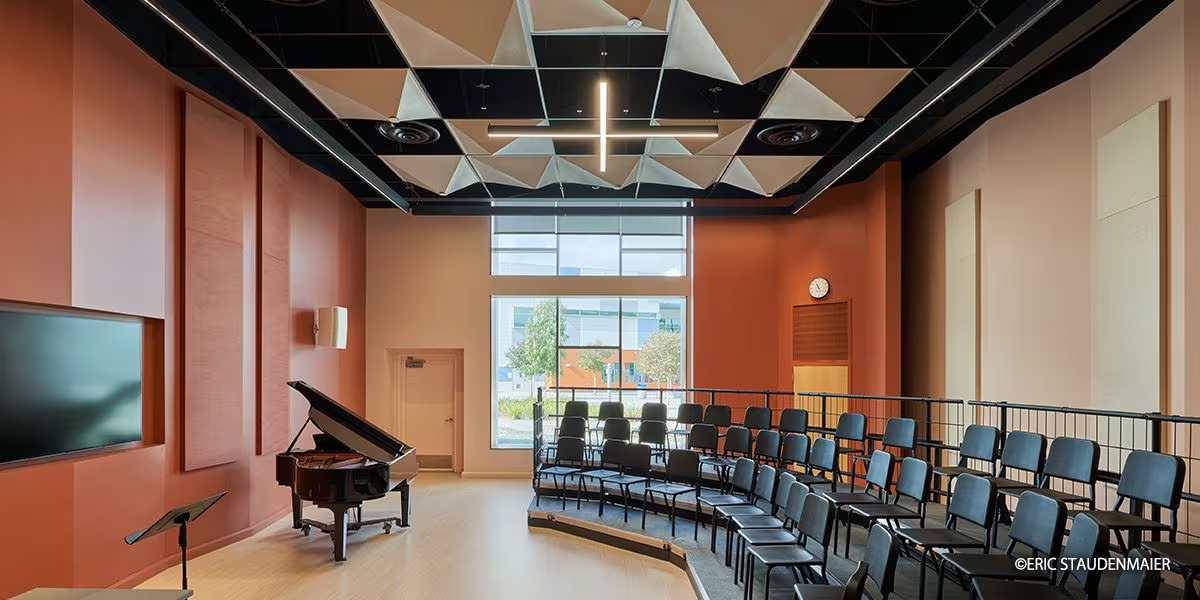
Founded in 1955, Cerritos College in Norwalk is one of the leading community colleges in Los Angeles County. With its strong focus on the arts, students in the college’s Music Department enjoy a complete ‘One Yamaha’ experience, with instruments, digital mixing systems, software and sound reinforcement all from Yamaha Group companies.
Cerritos College welcomes an average of 22,000 students each year to participate in 87 two-year degree and certificate programs. Headed by Dr Andrew Maz since 2012, the Music Department offers Applied Music and Commercial Music streams, which lead students to four year university study or careers in music performance and production. Dr Maz has overseen the college’s transformation into a center of musical excellence, including an 84,000ft2 (7,800m2) performing arts center, which features a 400 seat theater, 150 seat black box theater, 100 seat lecture hall and outdoor amphitheater.
With a culture that focuses on innovation and collaborative spirit, the college’s music programs encompass a diverse array of genres, with musical instruments, live production and studio equipment supplied by Yamaha, Steinberg and NEXO. With Dr Maz looking to expand the commercial music program into a four year degree, pro audio plays a very important role. As well as a wide range of Yamaha instruments, the company’s professional audio equipment delivers a best-in-class theater and entertainment learning experience.
When the new performing arts center was being planned, Dr Maz’s dream was to not bring anything over from the old building. Although many brands were available, Yamaha offered so many advantages that Dr Maz suggested a unique partnership approach.
“I use Yamaha gear and number one, it doesn’t break. This is a big thing when considering use by students. We didn’t want to be tied down with having to deal with maintenance all the time and, if there was a problem, I didn’t want to sit in a phone queue for 20 or 30 minutes,” he says.
“If we were going to spend the kind of money we were looking at, I wanted a relationship that would give us more in terms of service. This was also why I wanted a one-stop solution, so I didn’t have to deal with several different vendors. Support from Yamaha’s dedicated higher education team was another advantage.”
The music department was already using Yamaha equipment, such as QL series digital mixing consoles, while Dr Maz had recently started using Steinberg Cubase. Together with Yamaha’s renowned musical instruments, it became obvious that a great relationship could be forged. Dr Maz proposed a partnership where the department would give back by effectively being a high end Yamaha showroom.
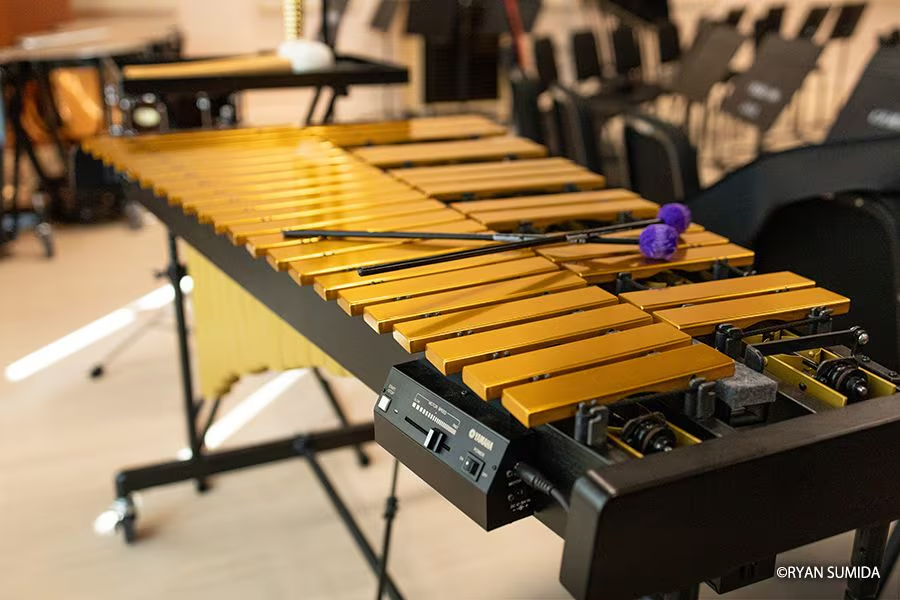
Hitting the right note
Starting with instruments, Yamaha pianos offered many advantages for the learning environment - the price point, durability and flexibility being major factors.
“We needed new pianos for our practice rooms and for us it’s very much about value,” says Dr Maz.
“Compared to other vendors, we felt that the CFX series sounded, played, felt and was made better, yet was still affordable for a student to purchase. It just felt like a more solid instrument for the money. The piano faculty had the chance to play one at Yamaha’s Buena Park showroom and also in a duet concert at the college. They all fell in love with it.”
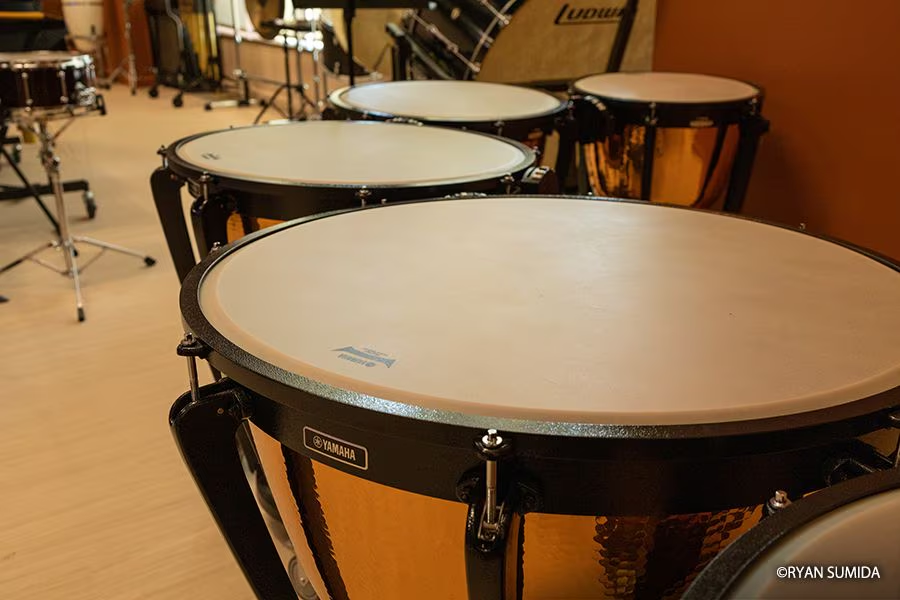
With the new performing arts center giving Dr Maz the freedom to effectively fill a blank canvas in the way he chose, Yamaha’s Disklavier and AvantGrand series hybrid pianos provided the opportunity to change how piano was taught at the college.
“It was interesting how liberating not bringing anything over from the old building was, because I didn’t have to worry about how it was going to fit into the new building. It also made me ask the question, how would we teach if the sky was the limit? Part of our thinking was what could we do differently,” he says.
“For example, we sit with a student going ‘you think it sounds great, but by the time the sound bounces off the lid and translates to the hall, what you think is an enormous crescendo is just a tiny little ramp’. They don’t realize that until they experience it,” he smiles. “But the Disklavier has totally changed the piano lesson experience. You can hit record, play the piano and then play it back, listening to that actual performance from every different part of the hall. This was life changing from an instructional point of view. “Similarly, the AvantGrand NU1X and N3X feel and sound like pianos, but we can record accompaniments and use a thumb drive to play them on the pianos, so students can practice with the accompaniment. They can slow down or speed up the tempo, they don’t have to use a recording or YouTube. And I also don’t have to tune them!”
Dr Maz expresses similar sentiments about instruments throughout the Yamaha range.
“The ranges are uniform and they just work. Teachers have to spend a lot of time making sure all the instruments work, with parts falling off and things breaking, so durability is a big factor. We know Yamaha’s more expensive instruments are phenomenal, but even if we buy a Revstar electric guitar that’s one notch down from the top model, it’s still a fantastic instrument,” he says.
“I bought a classical guitar because I wanted to have one in the studio and it’s great. We have a couple of basses, you plug them in and they sound fantastic. I’m amazed by how even the entry level brass and woodwind instruments sound as good as they do. They feel good, they sound good, they don’t diminish anything. For me Yamaha has really captured how instruments at a medium price point can be very playable and will last for a long time.”
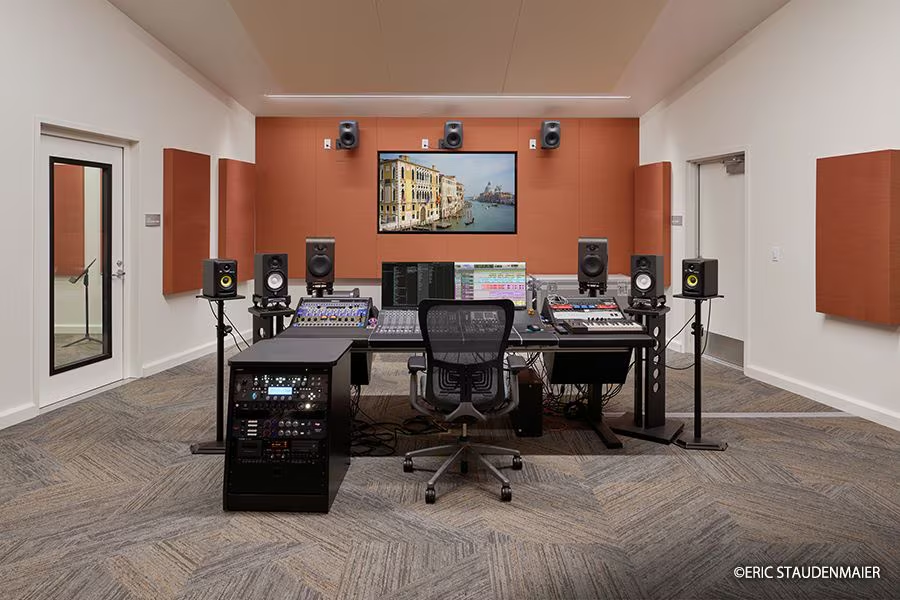
Production perfection
Longevity, teaching flexibility, real world application and value for money are all themes of Dr Maz’s radical equipment overhaul of Cerritos College’s music department. And when it comes to recording and production, interoperability between spaces is key.
“I wanted to be able to record from any space to the studio. As an industry standard, Dante was the obvious choice for audio networking. I know Yamaha and Dante have a close relationship and the next phase was building in that interoperability, where we could be in multiple places and do multiple things with a system that would last another 15 years or so,” he says.
“I love analog, but I don’t like taking care of analog and I didn’t want to worry about patchbays, multicores or anything like that. A digital environment was ideal because, once you learn to use one digital console, you can pretty much learn to use any. I knew there are a lot of Yamaha consoles out there, alumni were telling me that they were working on them. Plus I can open Dante controller, send something somewhere else, and I know it’ll all work.
Although the idea was not to bring any equipment across from the old performance space, the college already had Yamaha QL1 and QL5 digital mixing consoles and R-series I/O racks. These were complemented by CL and TF series consoles and a flagship live sound system in the main performance hall, comprising a RIVAGE PM5 digital mixing system and a NEXO front of house and monitor system.
“The whole notion is about how can I make the mixing engineer’s life easy, while giving students the tools that they will work on in the world outside,” says Dr Maz. “Part of this relationship with Yamaha is that the students are training on the best equipment they can. And in the world of work, they are guaranteed to come across a Yamaha board.
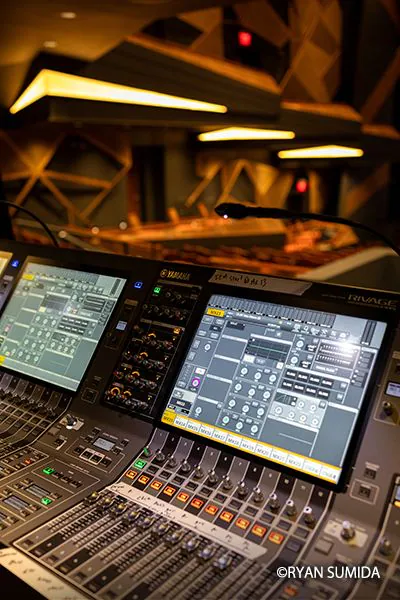
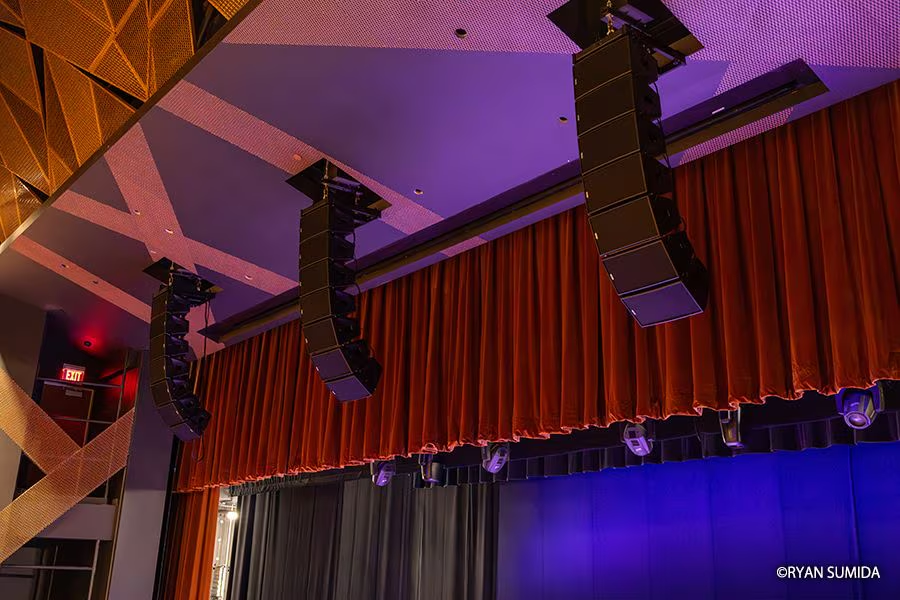
“Some digital consoles are difficult to navigate, but to keep a new student encouraged and motivated little rewards are important, like being able to get sound quickly. There’s something very satisfying for the student for that to happen within a few moments. The RIVAGE PM5 is a phenomenal system that, like all Yamaha stuff, just works. And from the audience perspective, all that matters is that it sounds good!”
Once Dr Maz was aware of NEXO, he was happy for it to be specified for the main performance space. “Initially I wasn’t sure about which speaker systems to use, but I was kind of committed to the idea of being a Yamaha school, in the sense that everywhere you walked in, there was Yamaha. I learned that a NEXO system would deliver seamless, accurate sound from the RIVAGE PM5 system to exactly where it was needed in the auditorium. I was very happy for NEXO to be installed and it has really delivered the quality that I hoped it would.”
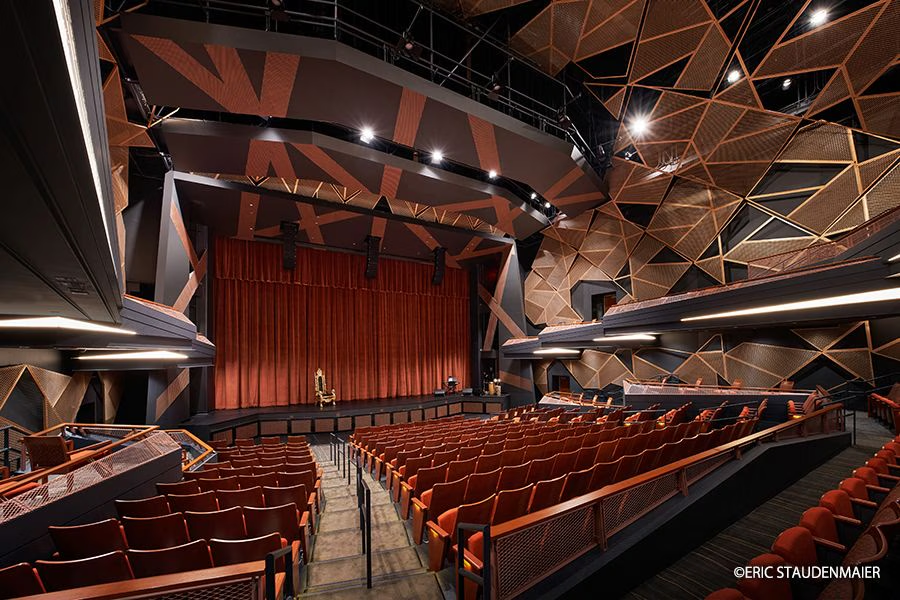
Pure sound
In the studio, Dr Maz’s preference is for Yamaha HS series powered monitors. This is because, like the industry-standard NS-10Ms before them, they don’t color the sound.
“I mixed my latest project on HS7s because they best represent what the rest of the world hears,” he says. “In blind listening tests, most students pick the HS speakers because they say they sound the purest. You’re hearing the speaker, not anything else. I tell them to buy HS5s because they are not going to amaze you with what they can do to the sound, they’re going to tell you what’s really going on.”
Meanwhile, Steinberg software is used throughout the music department, thanks to how it has all the necessary features but makes them so fast to use. “I moved to Cubase because I wanted a cross-platform solution, and then I found out that nearly every film composer uses it,” says Dr Maz.
“I saw a Steinberg video with film composer Alan Silvestri, who noted that, if you’re working on something simple and it takes five mouse clicks, you don’t really complain. But when you have to do that same function 20,000 times, that’s 100,000 mouse clicks. But what if you can do that in one mouse click? You save yourself hundreds of hours. I thought that was very profound.
“Students take classes in two industry-standard DAWs and most gravitate towards Cubase, because they say it’s fast and it does what it needs to do.”
Another important Steinberg product is scoring software Dorico. At a conference by the California Association of Professional Music Teachers, Dr Maz was asked to do a Dorico workshop, where he walked them through the shortcuts. “They all said they were getting Dorico,” he smiles. “Pianist/ composer Nahre Sol was in the room and said ‘I never knew notation could be so easy.’ Later she submitted a score to be performed and thanked me for the amount of time she saved.”
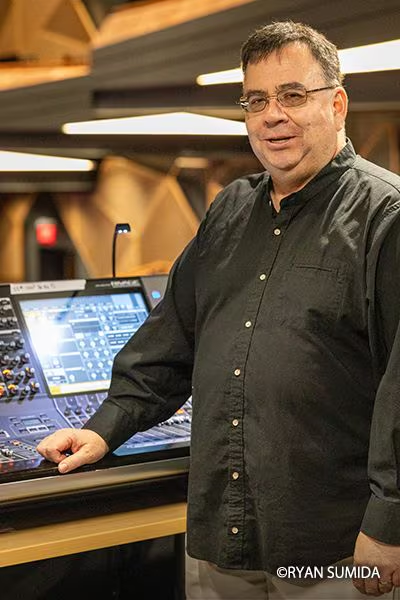
The walkaway
For his students, Dr Maz stresses how the most important aspects of the course are workflow and problem solving, because that’s what makes them useful to an employer.
“My philosophy has always been training them to be useful to somebody, because they are, they’ll be hired,” he says. “You have to be able to adapt to the situation and, while technology will change, problems will always need to be solved. And once you establish a workflow, that workflow translates to any situation, any concept or DAW.
“I have long wanted to have a partner that would support this philosophy. For the college, the return on investment is also vitally important and the students learn to appreciate the Yamaha philosophy of build it, make it work and keep making it work, with equipment isn’t outdated in a year. For example, I’m hoping that I can keep training on the QL consoles for another five or six years.”
Despite other high profile brands in the marketplace, Yamaha also stood out as the preferred choice for Cerritos College because of its comprehensive One Yamaha approach, producing instruments and equipment which are designed to seamlessly work together.
With the partnership allowing students to graduate with real world skills in composing, recording, editing, performing, mixing and the all-important problem-solving, Cerritos College, Yamaha, Steinberg and NEXO are working together to help the students of today become the leading sound designers, engineers and audio innovators of tomorrow.
Location
Los Angeles, United States

